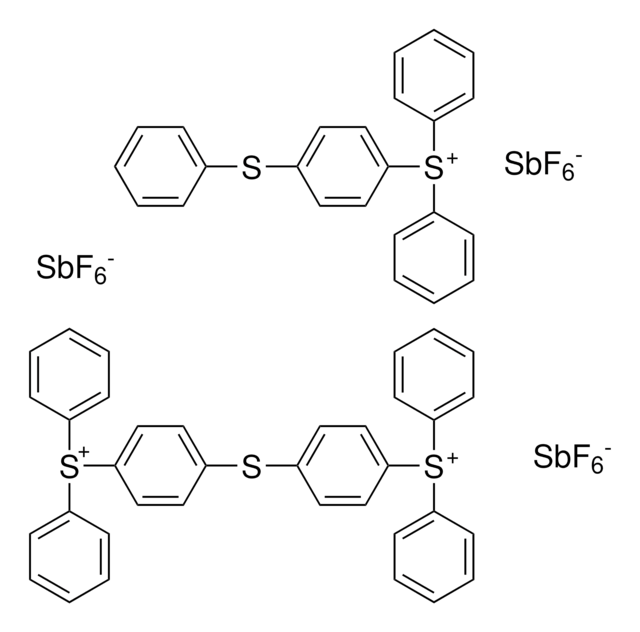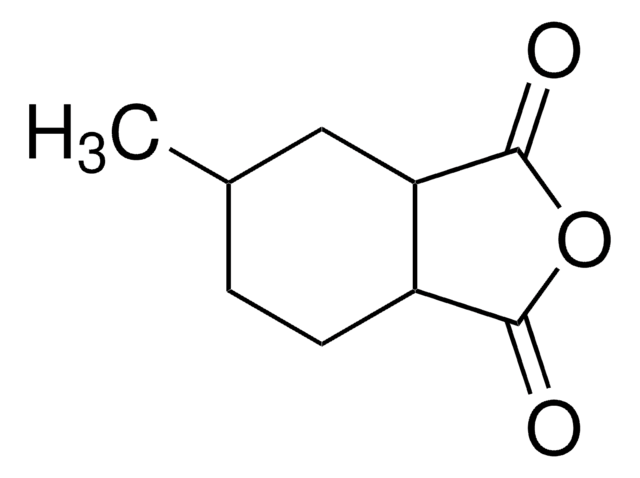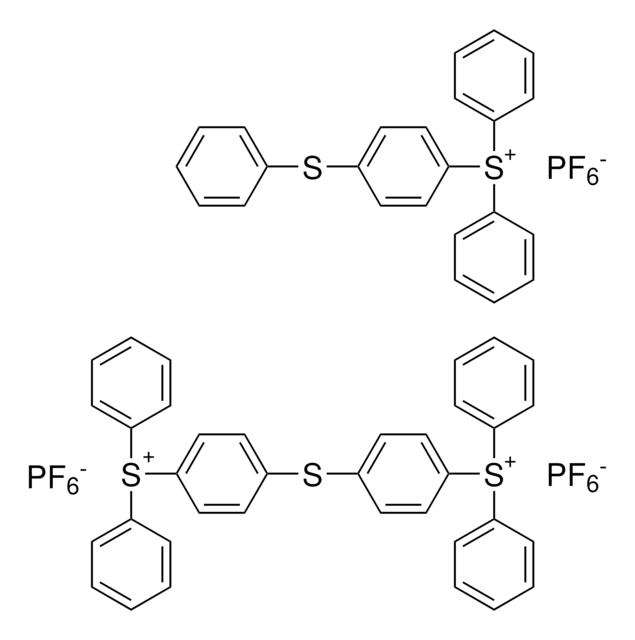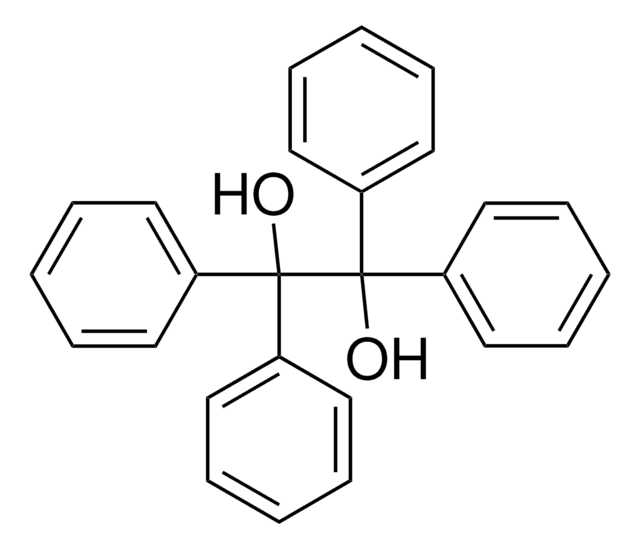407208
3,4-Epoxycyclohexylmethyl 3,4-epoxycyclohexanecarboxylate
Sinônimo(s):
3,4-Epoxycyclohexanecarboxylic acid (3′,4′-epoxycyclohexyl)methyl, 3,4-Epoxycyclohexanecarboxylic acid (3,4-epoxycyclohexylmethyl) ester
About This Item
Produtos recomendados
forma
viscous liquid
Nível de qualidade
índice de refração
n20/D 1.498 (lit.)
pf
−37 °C (lit.)
densidade
1.17 g/mL at 25 °C (lit.)
cadeia de caracteres SMILES
O=C(OCC1CCC2OC2C1)C3CCC4OC4C3
InChI
1S/C14H20O4/c15-14(9-2-4-11-13(6-9)18-11)16-7-8-1-3-10-12(5-8)17-10/h8-13H,1-7H2
chave InChI
YXALYBMHAYZKAP-UHFFFAOYSA-N
Categorias relacionadas
Descrição geral
It can be synthesized by the reaction of 3′-cyclohexenylmethyl 3-cyclohexenecarboxylate with peracetic acid. Its aliphatic backbone and molecular structure provide a number of useful properties such as thermal stability, weatherability, and electrical conductivity.
Aplicação
- A reactive diluent or a cross-linking agent in the preparation of flame retardant epoxy composites, which finds application in the electricals, textiles, electronics, and transportation.
- A monomer in the synthesis of polymeric gels, which can have applications in controlled release systems, drug delivery, or sensors.
Palavra indicadora
Warning
Frases de perigo
Declarações de precaução
Classificações de perigo
Aquatic Chronic 3 - Skin Sens. 1
Código de classe de armazenamento
10 - Combustible liquids
Classe de risco de água (WGK)
WGK 3
Ponto de fulgor (°F)
244.4 °F - closed cup
Ponto de fulgor (°C)
118 °C - closed cup
Escolha uma das versões mais recentes:
Já possui este produto?
Encontre a documentação dos produtos que você adquiriu recentemente na biblioteca de documentos.
Os clientes também visualizaram
Nossa equipe de cientistas tem experiência em todas as áreas de pesquisa, incluindo Life Sciences, ciência de materiais, síntese química, cromatografia, química analítica e muitas outras.
Entre em contato com a assistência técnica









